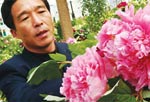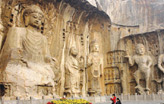Factory fever
Updated: 2011-03-11 11:39
By Patrick Whiteley and Wang Chao (China Daily European Weekly)
Cui Jie, mayor of Changchun, says FAW's presence was significant for the local economy and the government is committed to do anything to help.
"It's our responsibility to address any possible external problems for FAW for example, in relation to the land, energy and logistics problems," he says. "We are trying to provide anything FAW needs to guarantee its development, with the resources of the whole city."
Shanghai-based SAIC is currently the biggest auto group in China, with a yearly production capacity of more than 3.5 million, and a majority of its sales - more than 2 million - came from joint ventures with Volkswagen and GM.
In 2010, the company sold 1.1 million Shanghai-GM made vehicles and 1 million Shanghai-Volkswagen products, the two bestsellers in the Chinese market.
While SAIC's Wuling minivans and Chevrolet Sparks are made in Liuzhou, its VW factories are located in Shanghai and Nanjing.
"SAIC-VW is the more successful of the two VW joint ventures due to it being located in a strong economic zone surrounded by Zhejiang and Jiangsu provinces, both of which developed extremely quickly under Deng Xiaoping's opening-up policy," says Sutcliffe.
In December last year, SAIC signed a deal with the Nanjing government in which it will invest another 10 billion yuan in the next five years to build a new plant.
"By 2015, the company should be able to produce 700,000 self-brand passenger cars, 40 percent of the total output," Chen Hong, SAIC president, says. "Beginning this year, SAIC will launch three to four new models every year."
China's second biggest automaker in 2010 was Dongfeng, which sold 2.61 million cars reflecting a year-on-year increase of 34.6 percent. In 2011, the company plans to produce 2.9 million automobiles, and reach the sales of 380 billion yuan.
Dongfeng, which means "east wind', is based in Wuhan, in Central China's Hubei province, and has developed an international following of joint venture partners with Peugeot, Citroen, Kia, Nissan, Honda and Yulon Motors.
The company's major success has been with Kia, Nissan and Honda, especially in the Guangdong province where it has expanded its production facilities and where these marques have gained a major stranglehold on the market. It also has two newer Kia production bases at the Yancheng Economic Development Zone in Jiangsu province.
But Dongfeng's Wuhan operations are relatively new.
The company was originally set up in 1964 in Shiyan, a small city near the Wudang Mountain, also in Hubei province, where it produced trucks and military vehicles. Up until a decade ago, half of its yearly production was made up of commercial vehicles.
The strategic inland location was chosen because of military reasons, a Dongfeng spokesman says. "Twenty four factories spread across more than 20 valleys near the mountain. Back then it was known as 'car city stretching miles'," he says.
"However, the location chosen for political considerations, became a major obstacle for Dongfeng's further development and moved to Wuhan on the banks of the Yangtze River.
"As the biggest city in Central China, and a city near the Yangtze River, Wuhan has convenient transportations connecting other major cities in China, both by land and water.
"It is also the economic and financial center of Central China, where we can attract more talent and capital."
Guangzhou Automobile Group Co (GAC), which has joint ventures with Fiat and Honda and is based in the south of China, says its breakthrough year will occur in 2012 because it was still expanding its industrial layout and production capacity.
"We want to gain competitiveness before we expand our scale," says GAC president Zhang Fangyou. "By 2015, the production capacity is expected to reach 3 million, and the sales revenue will be 400 billion yuan."
Zhang says the Chinese market is still developing and is subject to government policies, which are hard to predict, but still has confidence in his company's expansion plans.
"Since 2009, cars are becoming a mass consuming product rather than an elite product. Although some cities might have car restriction policies, the market potential is still huge," he says.
E-paper

Rise and shine
The Chinese solar energy industry is heating up following recent setbacks in the nuclear sector
Bombs aim for regime change
CSI, with a twist
Literary path
Specials

Peony express
Growers of china's unofficial national flower are reaching out to europe for help

Tea-ing up
More turning to Chinese tea for investment opportunities like vintage wine

A cut above
The ancient city of Luoyang is home to a treasure trove of cultural wonders.
